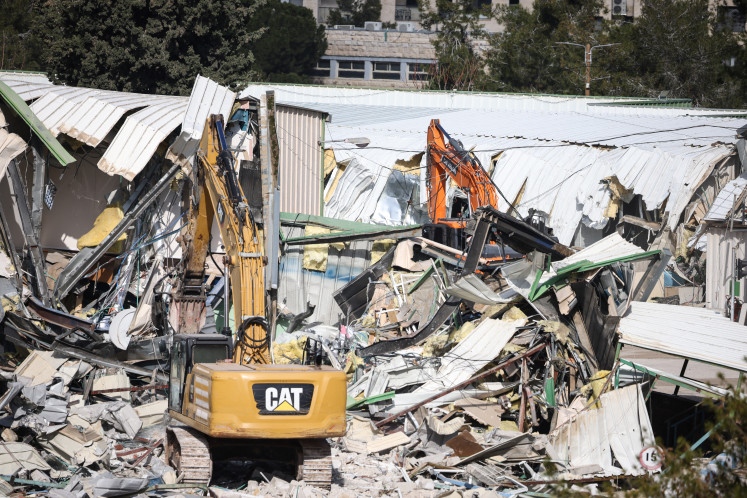Popular Reads
Top Results
Can't find what you're looking for?
View all search resultsPopular Reads
Top Results
Can't find what you're looking for?
View all search resultsLearning physics the fun way
Watch closely: Winarto (left) explains the magnetic field principle using his handmade teaching aid while his students at Malang State University pay close attention
Change text size
Gift Premium Articles
to Anyone
W
span class="caption">Watch closely: Winarto (left) explains the magnetic field principle using his handmade teaching aid while his students at Malang State University pay close attention.(JP/Aman Rochman)
A seasoned lecturer in Malang is on a mission to make physics less intimidating for students by using creative teaching aids.
Winarto, a 60-year-old physics lecturer at Malang State University (UNM), was showing final-year pedagogic students how to fold a sheet of folio paper before casting it hard to the ground to produce an explosive sound.
The scientific demo was Winarto’s way of teaching the principles of physics in sonic booms.
Physics has so far remained a difficult subject that most junior and senior high school students dislike, particularly when teachers only focus on working with formulas.
This problem inspired Winarto to introduce simple and low-cost teaching aids using recycled goods.
Speaking to several visiting junior and senior high school teachers who wanted to develop their own physics teaching aids, Winarto said he believed the teaching of the science should involve more observation and analyses of facts, rather than just providing plain, written descriptions, as most teachers do.
When explaining magnetic fields, for instance, teachers typically use textbook descriptions and calculate with formulas. Consequently, students tend to get bored and have difficulty understanding the scientific logic because they are mostly getting only figures and formulas.
According to Winarto, students should first be shown teaching aids made from materials found around them and they should be told how to handle the tools.
As students develop interest, they should be taught how to analyze scientific phenomena created through scientific tests that utilize the tools. This way, there will be a more exciting atmosphere in class and as students get more absorbed into practical science, the formulas can then follow.
“Later, students’ homework should include building physics learning aids based on their imagination, which is done in groups so their lessons are not just about calculations. The exact science should be concentrated more on creativity and imagination,” Winarto said.
Arini Catur Lina, a junior high school teacher, said she typically taught her students by introducing theories, formulas and calculating figures, thus making it hard for them to grasp the physics lessons.
After participating in Winarto’s demonstration, Lina said she understood how it was better to teach physics using teaching aids because the practical application of the science could take place before the students’ own eyes, allowing them to better understand the lesson at hand.
“When Pak Winarto explained Bernoulli’s principle by inviting us to make origami paper planes and fly them together, the effect of the folding on aircraft flight could be noticed,” she said.
“This method of teaching is stimulating and makes it easier for students to understand. Hopefully, no more students will be absent from our physics classes.”
Teachers who attended Winarto’s demonstration also received instructions on how to craft and develop their own teaching aids without having to buy expensive tools.
The teaching aid models shown to the teachers during the demonstration were all built from cheap materials in a simple way by utilizing items such as children’s toys, plastic bottles and jars, hoses, polyvinyl chloride pipes and products from flea markets.
“Let’s hope physics won’t be a dreaded subject in the future,” Winarto said, adding that he expected sponsors to provide funding for educational books and VCDs for free nationwide distribution.
______________________________
Teachers interested in learning more about this method are invited to visit the UNM Mathematics and Physics School laboratory or website http://fisika.um.ac.id/blog-fisika/39-alat-peraga-fisika-besar-daur-ulang.html. An instructional book and VCD are also provided.










